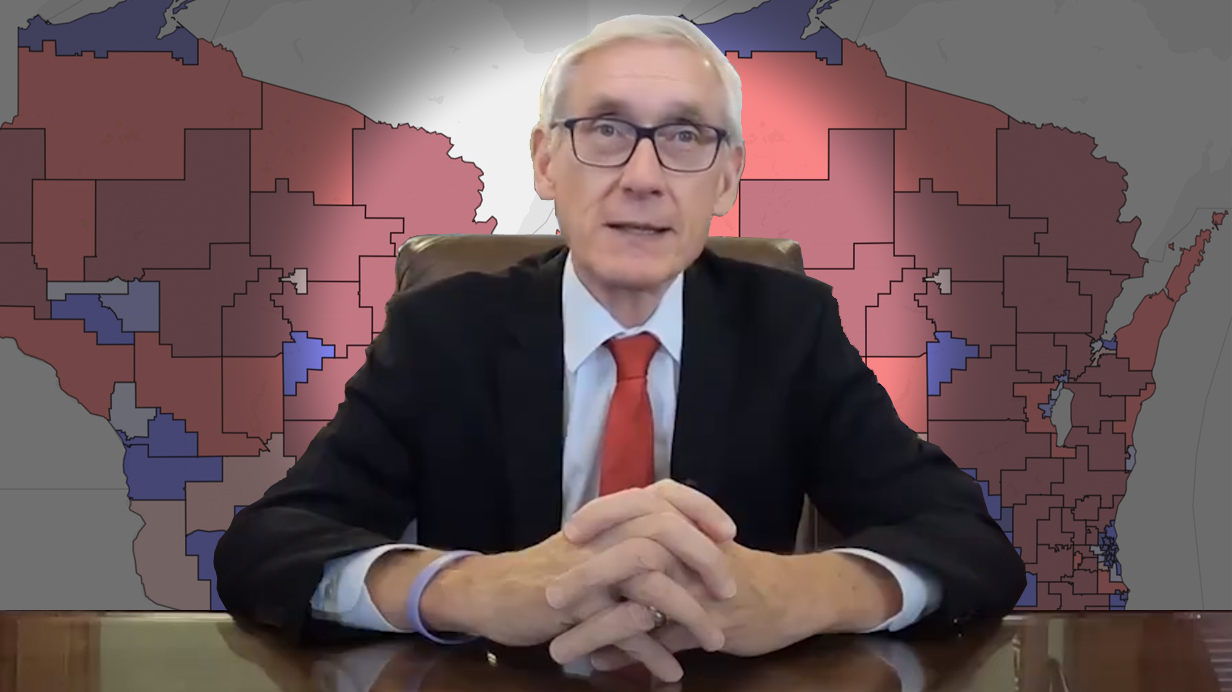
Dan O’Donnell explains the real reason Governor Evers vetoed his own legislative maps
Jan. 31, 2023
Perspective by Dan O’Donnell
With one stroke of his veto pen Tuesday, Wisconsin Governor Tony Evers drew a clear outline of Democrats’ plans for redistricting by erasing any pretense that they actually want fair electoral maps. On Tuesday, Evers essentially struck down his own maps—modified only slightly by the State Legislature to avoid drawing an inordinate number of Republican incumbents into the same districts.
“These maps are more of the same,” Evers said in a video message accompanying the veto. “Republicans passed maps to help make sure Republican-gerrymandered incumbents get to keep their seats. Folks, that’s just more gerrymandering.”
Ironically enough, Evers’ maps—not Legislative Republicans’—were deemed to be an unconstitutional racial gerrymander by no less an authority on the matter than the United States Supreme Court. In a 7-2 decision in March 2022, the Court found that Evers violated both the Voting Rights Act and the Equal Protection Clause of the 14th Amendment in creating an additional district comprised of majority-black voters (who are overwhelmingly likely to vote Democrat).
By contrast, until the Wisconsin Supreme Court’s new liberal majority struck down Republicans’ maps on hilariously flimsy grounds last month, no Supreme Court—state or federal—had ever rejected what hyperventilating Democrats screeched were the “most gerrymandered maps in American history” following the 2011 redistricting.
Instead, the U.S. District Court for the Eastern District of Wisconsin held the following year in Baldus v. Members of the Wis. Government Accountability Board that “the resulting population deviations” from the Republican redistricting “are not large enough to permit judicial intervention under the Supreme Court’s precedents” and thus constitutionally and legally permissible.
Liberal activists refused to accept that decision, however, and filed another lawsuit that eventually reached the U.S. Supreme Court in 2018. The plaintiffs in Gill v. Whitford lacked standing to challenge the maps, however, and the Court rejected their case, remanding it back to the liberal-controlled U.S. District Court for the Western District of Wisconsin, where it was dismissed.
Following the 2020 census, Republicans adopted a “least change” approach to redistricting and made minimal alterations to the 2011 maps. Liberal activists again were unable to accept defeat, but this time waited—exactly one day—until uber-left Justice Janet Protasiewicz was sworn in and gave them a 4-3 advantage on the Wisconsin Supreme Court.
The ruling was fait accompli: Protasiewicz had for months violated Wisconsin’s Code of Judicial Conduct by promising voters that she would strike down Republican maps she repeatedly called “rigged” and she of course refused to recuse herself from a case that she had unlawfully prejudged.
Protasiewicz and fellow liberals Ann Walsh Bradley, Rebecca Dallet, and Jill Karofsky revealed how deeply partisan—and not particularly bright—they are with a ruling that struck down Republican maps because of their inclusion of “municipal islands”—small, lightly populated areas of land annexed my larger cities with which they do not share a boundary.
These, the liberals concluded, made the maps unconstitutional even though just two years earlier Bradley, Dallet, and Karofsky all voted for Evers’ maps…which also included municipal islands.
Republicans could of course see the writing on the wall: No map they could ever submit would ever pass this new, nonsensical standard so they waved something of a white flag and signaled last week that they would accept Evers’ maps but make only minor changes so that fewer Republican incumbents would be drawn into the same districts, thus eliminating one of their seats.
The practice of eliminating members of the political opposition by pitting them against each other in primaries or forcing one of the two new district-mates to retire is a well-worn gerrymandering tactic, and the fact that Evers used Republican objections to it as the basis for vetoing his own maps is therefore telling.
His aim, and that of his liberal allies on the Supreme Court, isn’t fairness; it is a blatant gerrymander designed to hand Democrats the control of the State Legislature that they could never hope to win on their own. Why would Evers settle for 99 percent of what he wants when the Supreme Court can simply hand him more than he had ever dreamed?
He is content to let the Court create an even more gerrymandered map than he would ever dare present himself, and his veto only serves to prove it.